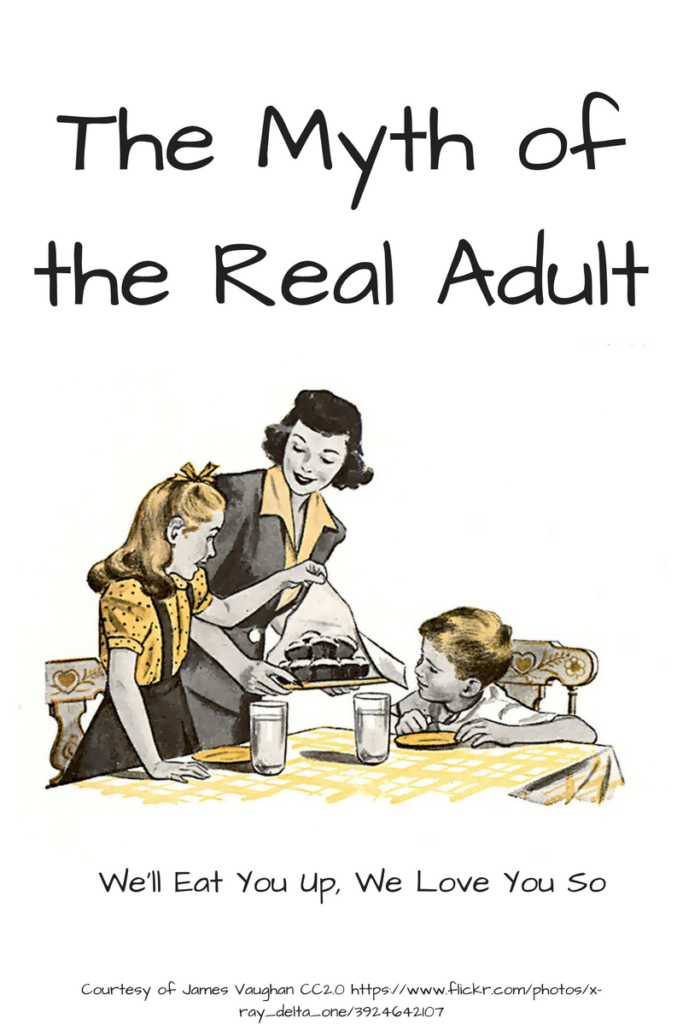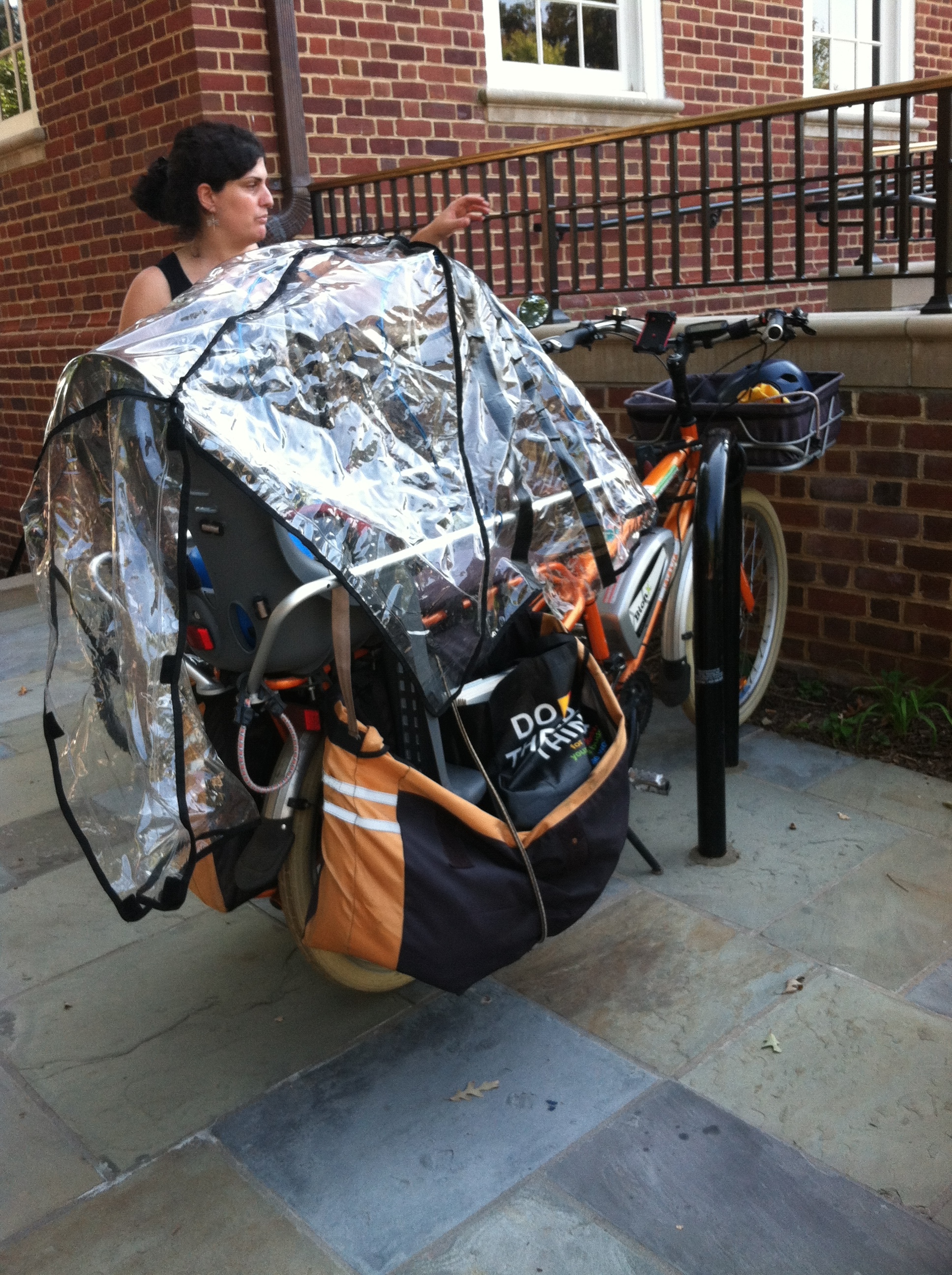Being in the middle of a burgeoning movement is exciting; being in the start can be pretty lonely. Fortunately, the bicycling for transportation movement in the U.S. is starting to embrace its more youthful sibling, the family biking movement. Last weekend, I attended the Washington Area Bicyclists’ Association (WABA) first D.C. area Family Biking Town Hall.
The event began with participants rotating through a series of stations, each inviting our input on a different subject. The topics ranged from ideas for the perfect family biking event (my favorite is the ABCs of Family Cycling) to best blogs for family cycling. They even asked to how to make the 50 States and 13 Colonies Ride more family-friendly. I think my best input was the important advice to try equipment with your kids before you buy it, so you don’t end up with a trailer your kid doesn’t like, as we did.
Besides the stations, I was glad for the opportunty to connect with some biking folks I haven’t seen in a while. While I expected to see the leaders of the DC and Gaithersburg Kidical Mass rides, I was pleasantly surprised to run into a prior member of the Rockville Bicycle Advisory Committee who as far as I knew had disappeared off the face of the earth. As it turned out, he had been a little closer – in Colorado, on a contract. Previously, he had helped us run bike rodeos for kids, so I was glad to see that he was still engaged in youth education. Sometimes, this city is so small and so full of talented, passionate people.
The WABA education director than gave a brief presentation that led into the main discussion. WABA acknowledged that they had been remiss in the past when they had frequently ignored the needs of families. One of the main problems is a simple lack of experience – only 1 of their 13 staff members has children. Considering the average salary of a staff member of a small non-profit and our local living costs, this fact didn’t exactly surprise me. Nonetheless, he said that WABA has realized that family cycling is “bleeding edge” and wants to ensure DC is one of the leaders in this next big step forward. While they can’t dedicate any specific staff members to the issue, they hope to integrate families into their current efforts and start some new family-oriented programming in the future. They finished with a pitch for their holiday party, which unfortunately reinforced their focus on young 20 and 30-somethings, as it was at a bar on a weekday night. At least they’re honest about their room to improve.
The discussion began with a broad visioning effort to describe an ideal family-biking location, then quickly broadened to include infrastructure needs, advocacy efforts and resources.
One thing everyone could agree on is that we want family bicycling to be normal, the way it is in Amsterdam and Japan, land of the “mommy bike.” Whether it’s pediatricians, drivers, or even other cyclists, we’re sick of people second-guessing our parenting and transportation decisions. As Megan from Kidical Mass DC said, we’ll have reached our goal “when people bike with their kids who didn’t bike before” simply because it’s the easiest, cheapest, most sustainable way to get around.
We also universally agreed that there’s a lack of centralized resources on family biking for current and expecting parents. While there are some home-grown blogs and a smattering of articles, there’s nothing that can walk people through all of the possible equipment, its advantages and disadvantages, and the process of actually choosing which one would work for them. One of the participants imagined a future where expecting parents learned about family biking options before they arrived at the hospital, just as they do now with car seats.
A desire for more protected bicycle infrastructure that is segregated from traffic was another common theme. What works for an experienced cyclist won’t necessarily work for a mom on a bakfiets maxing out at 10 mph or an eight year old on her own bike.
We also discussed the need to include parental voices in the policy conversation. One woman from Fairfax bemoaned the lack of female representation on bicycle advisory committees, as women are more likely to bring up issues relating to families. Fortunately, DC actually has strong representation in this category – the heads of both the Rockville and Arlington groups are women and at least half of Rockville’s committee is – but we can always do better. Another major problem is that a lot of the city meetings where people give testimony are very difficult for parents of young children to attend. WABA seemed interested in helping people know when and how to submit written comments as well as gathering testimonies to present at city hearings.
While none of this will happen overnight, it was encouraging to connect with other folks concerned about the same day-to-day issues and see a (bike) path forward. I’m excited to see what WABA will do with our input.
Unfortunately, almost every time I attend a family biking event, the commute reminds me of how far we have to go. The original plan was for Chris to drop me off after church and then drive home for Sprout’s nap. I would then get a Bikeshare bike and pedal two miles to the most convenient Metro station. The first hurdle was that the two closest Bikeshare stations were completely empty, forcing me to walk more than 1/3 of a mile to pick one up. Once I finally checked out my bike, I pedaled toward the National Zoo, only to find out that the road looping up and around the zoo was closed for construction. As the only other option was miles out of the way, I ended up walking my bike all the way up the zoo’s main path, which is a mile-long hill. It was only until I reached the parking lot that I was able to pick up a road. I ended up only biking a half-mile of the 2 mile trip, making it take more than twice as long as it should have.
Even though I don’t haul Sprout everywhere by bike (yet), I look forward to the day our vision is fulfilled and owning a cargo bike will be just a normal as owning a minivan is now.



